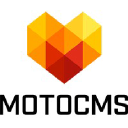Real-time collaborative editing is transforming how teams create and manage content. This article explores effective solutions for streamlining content workflows and boosting productivity through co-authoring tools. We’ll cover key features, implementation strategies, and best practices to help your team collaborate seamlessly.
Understanding Real-Time Co-Authoring Solutions
Real-time co-authoring allows multiple team members to work on the same document simultaneously. This approach offers several benefits:
- Increased efficiency: Eliminates version control issues and reduces back-and-forth communication
- Improved collaboration: Enables instant feedback and idea sharing
- Enhanced transparency: Provides visibility into the editing process for all team members
Popular platforms like Google Docs, Microsoft Office 365, and Dropbox Paper offer robust co-authoring capabilities. Choose a solution that aligns with your team’s existing workflow and technical requirements.
Implementing Effective Content Workflows
A well-designed content workflow is crucial for maximizing the benefits of real-time co-authoring. Consider these steps:
- Define roles and responsibilities: Assign clear tasks to each team member
- Establish guidelines: Create a style guide and content standards
- Set up document structure: Use templates and outlines for consistency
- Implement review processes: Define stages for editing, feedback, and approval
Use project management tools like Trello or Asana to track progress and manage tasks within your content workflow.
Maximizing Team Productivity with Collaboration Tools
To fully leverage real-time co-authoring, integrate additional collaboration tools:
- Communication platforms: Slack or Microsoft Teams for instant messaging and file sharing
- Video conferencing: Zoom or Google Meet for face-to-face discussions
- Task management: Todoist or ClickUp for assigning and tracking individual responsibilities
Encourage team members to use these tools in conjunction with co-authoring platforms to streamline communication and boost overall productivity.
Best Practices for Effective Real-Time Collaboration
Follow these guidelines to ensure smooth collaboration:
- Establish etiquette: Set rules for commenting, editing, and resolving conflicts
- Use suggesting mode: Allow team members to propose changes without altering the original text
- Leverage built-in features: Utilize comments, track changes, and version history
- Schedule regular check-ins: Hold brief meetings to discuss progress and address issues
Remember to provide training and support to help team members adapt to new collaboration tools and processes.
Integrating Co-Authoring Tools with Existing Workflows
Seamless integration of co-authoring tools is key to successful adoption. Consider these strategies:
- Gradual implementation: Introduce new tools in phases to minimize disruption
- Training sessions: Offer hands-on workshops to familiarize team members with new features
- Create documentation: Develop guides and FAQs for quick reference
- Identify champions: Designate early adopters to support and motivate others
Regularly collect feedback and adjust your implementation strategy as needed.
Overcoming Common Challenges in Real-Time Collaboration
Address potential hurdles to ensure smooth teamwork:
Technical Issues
- Connectivity problems: Establish backup internet options
- Device compatibility: Ensure all team members have access to compatible hardware
- Software updates: Keep all tools and applications up-to-date
Human Factors
- Resistance to change: Highlight benefits and provide ongoing support
- Overwhelm: Break down tasks and set realistic deadlines
- Conflicting editing styles: Establish clear guidelines for collaborative editing
Encourage open communication to address concerns and refine processes.
Measuring the Impact of Co-Authoring on Team Productivity
Track key metrics to assess the effectiveness of your co-authoring implementation:
- Time-to-completion: Compare project durations before and after implementation
- Quality of output: Evaluate the final product against established standards
- Team satisfaction: Conduct surveys to gauge employee experience
- Collaboration frequency: Monitor the number of collaborative sessions and participants
Use these insights to refine your approach and demonstrate ROI to stakeholders.
Future Trends in Collaborative Content Creation
Stay ahead of the curve by exploring emerging technologies:
- AI-assisted writing: Tools that suggest content and style improvements
- Virtual reality collaboration: Immersive environments for remote teamwork
- Blockchain for content management: Secure, decentralized content storage and version control
- Voice-controlled editing: Hands-free document manipulation for increased accessibility
Keep an eye on these developments to future-proof your content creation process.
Conclusion
Real-time co-authoring tools offer significant benefits for team productivity and collaboration. By carefully selecting the right tools, implementing effective workflows, and addressing common challenges, you can transform your content creation process.
Remember to:
- Choose tools that align with your team’s needs
- Provide adequate training and support
- Establish clear guidelines for collaboration
- Monitor progress and gather feedback
- Stay open to new technologies and trends
With these strategies in place, your team can harness the power of real-time co-authoring to produce higher-quality content more efficiently.

















































